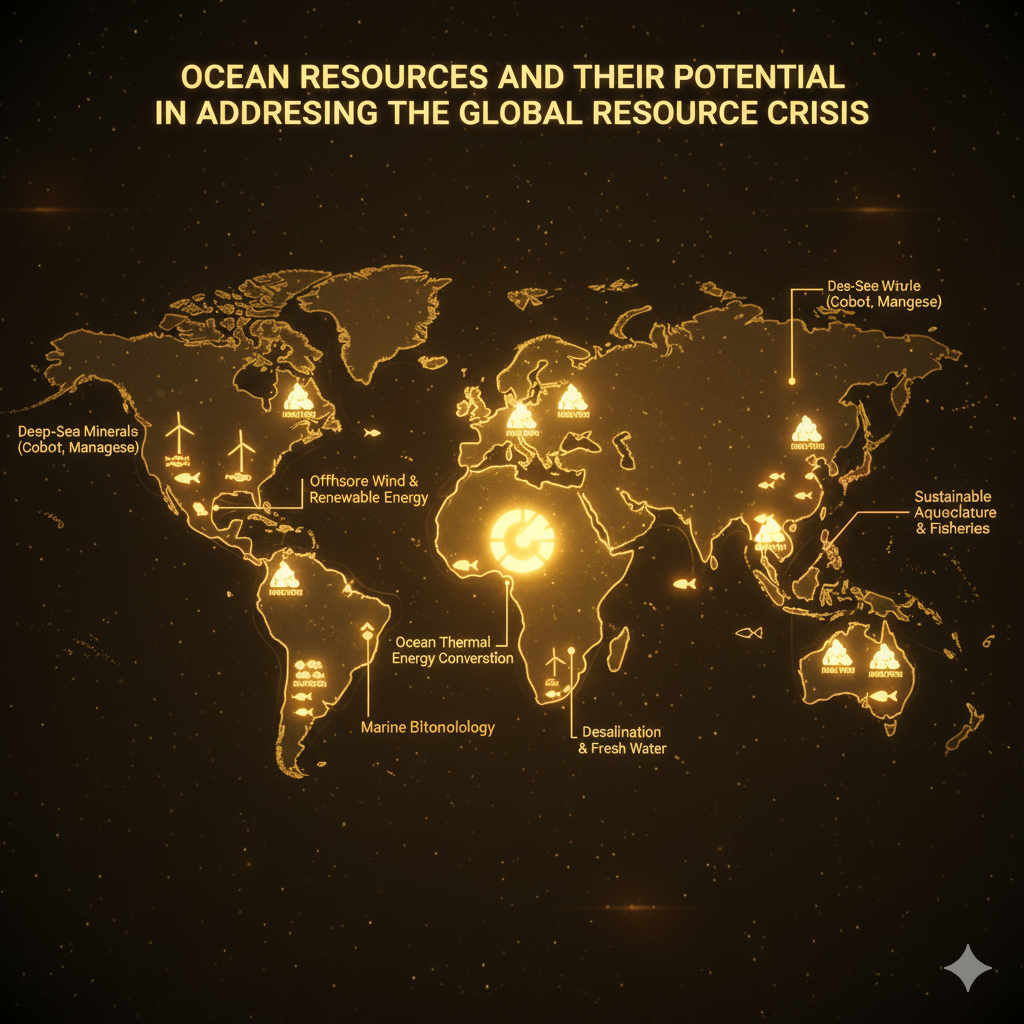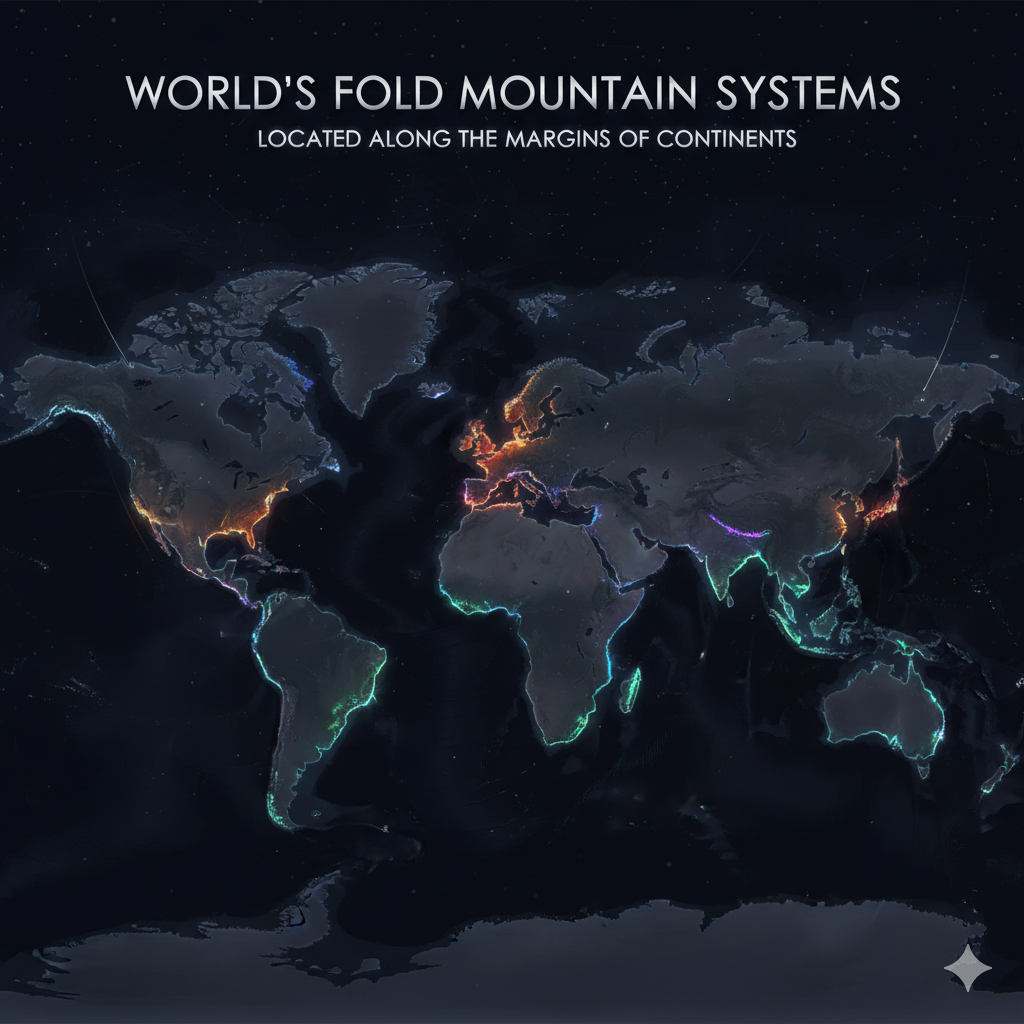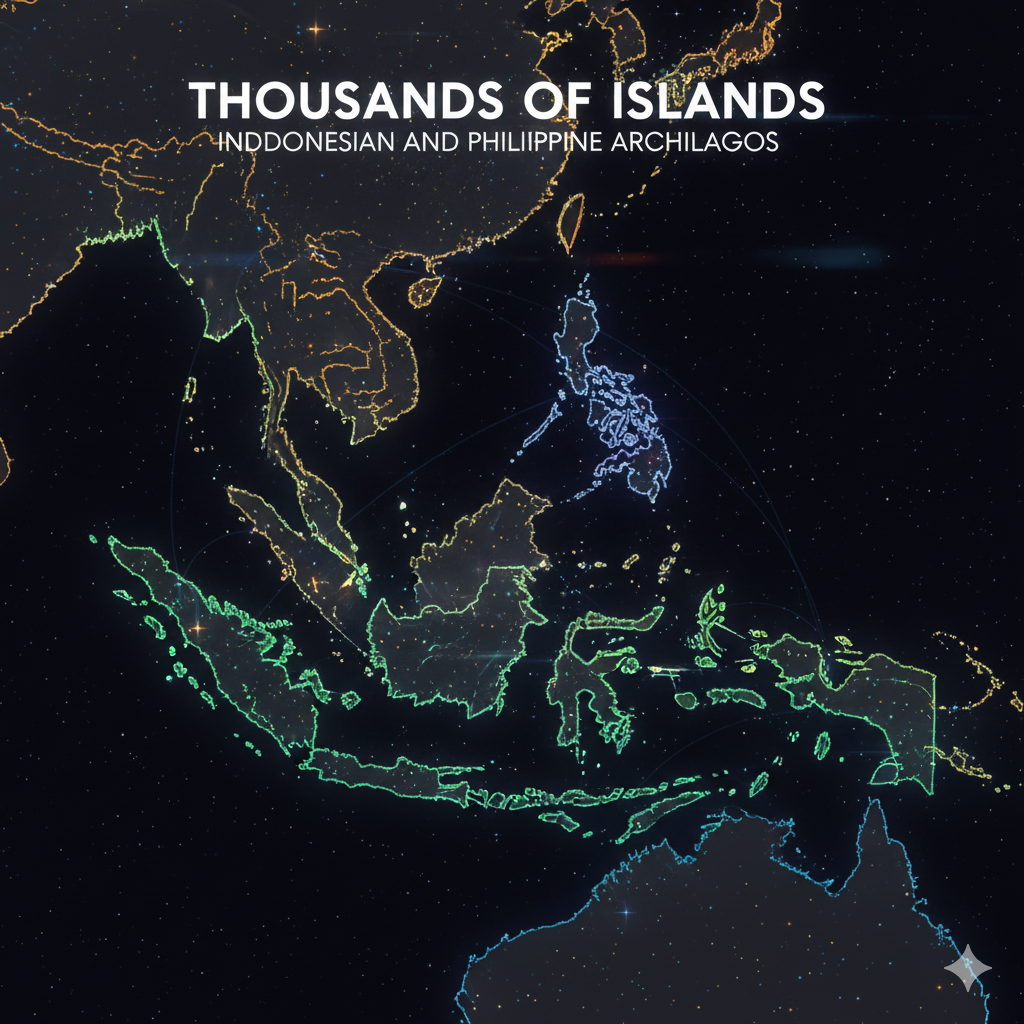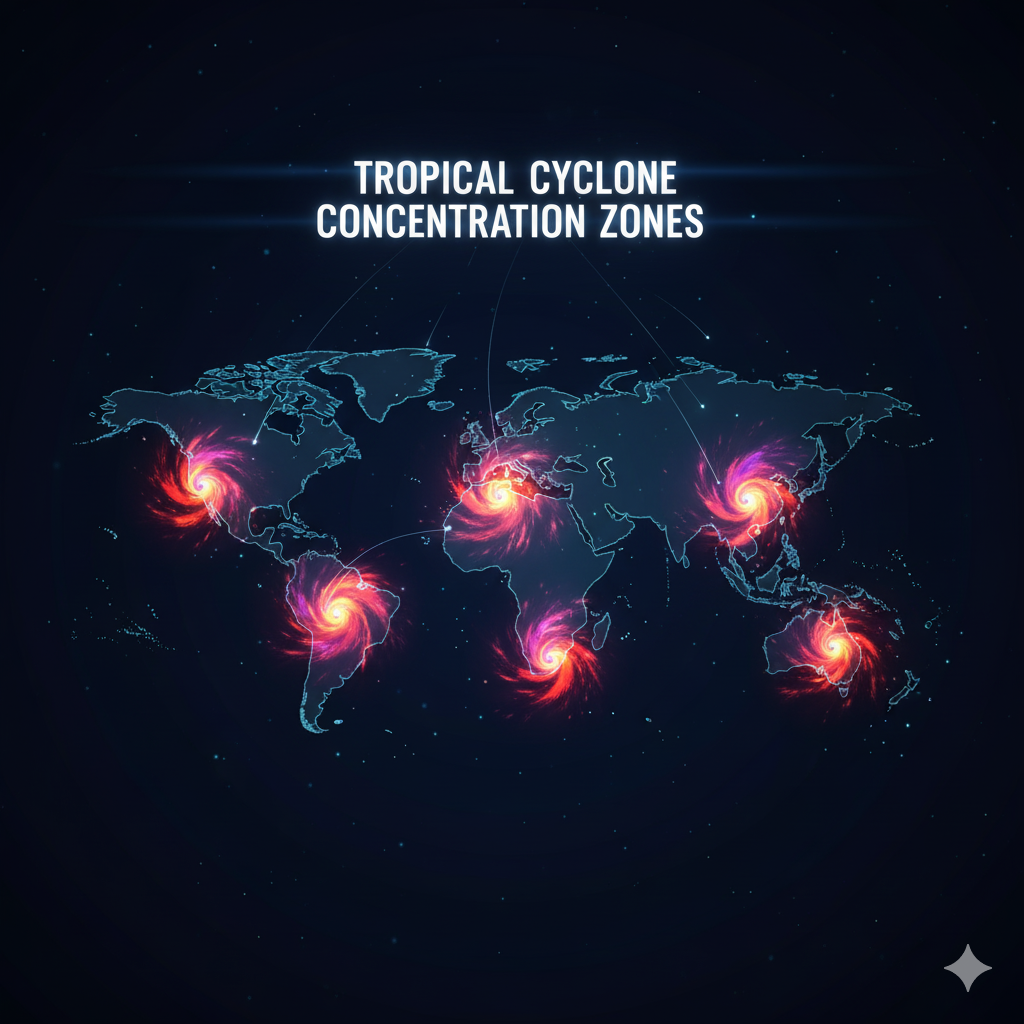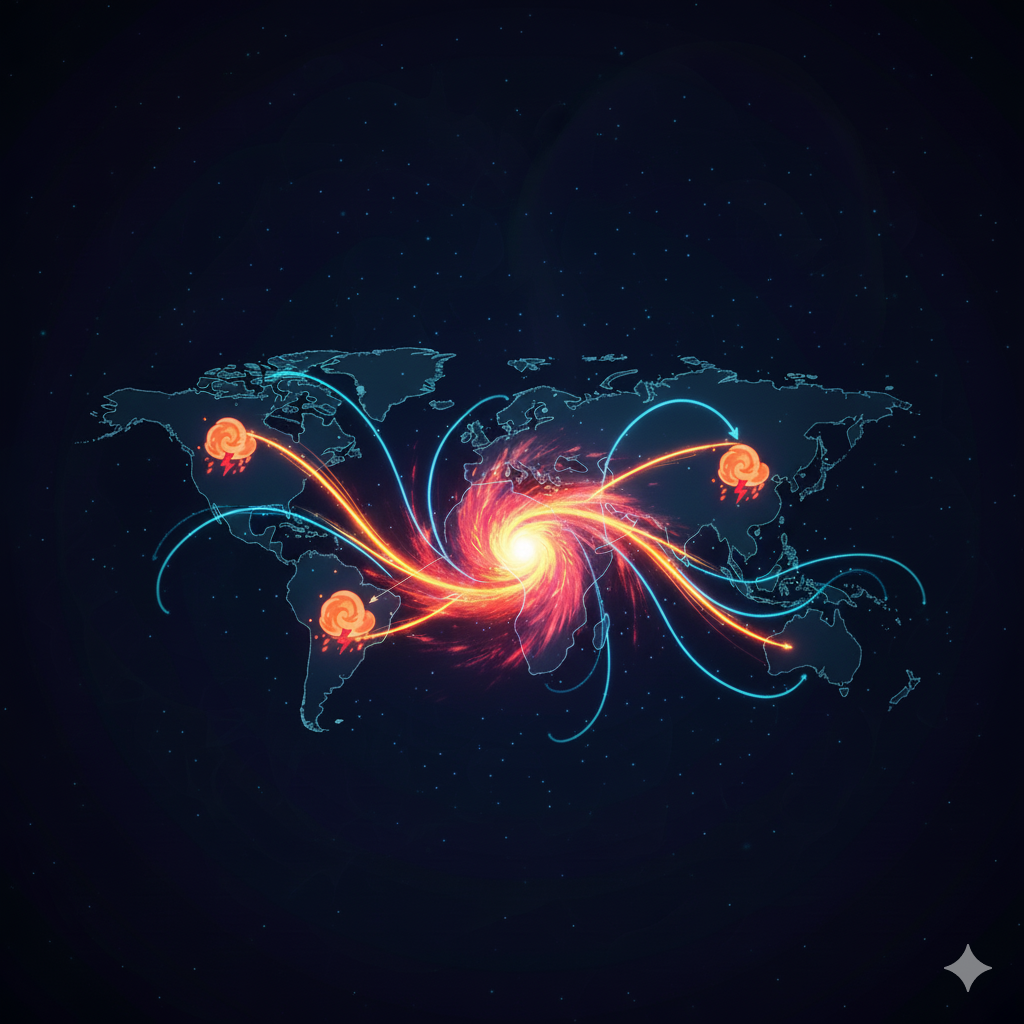Introduction
The world is presently facing an unprecedented resource crisis. Rising population, expanding industrialization, and unsustainable consumption have placed tremendous pressure on terrestrial resources such as land, forests, freshwater, and minerals. Against this backdrop, the oceans, which cover nearly 71% of the Earth’s surface, are emerging as a vast frontier of untapped resources. They offer food, energy, minerals, and even biotechnological potential.
However, the utilization of ocean resources is not straightforward. While they present enormous opportunities to mitigate global shortages of food, fuel, and raw materials, their extraction poses significant environmental, technological, and governance challenges. This essay critically evaluates the various resources of the oceans that can be harnessed to address the global resource crisis, while also highlighting the risks, limitations, and need for sustainable practices.
Major Resources of the Oceans
1. Marine Living Resources
a) Fisheries and Aquaculture
- Oceans provide about 17% of global animal protein intake, particularly for coastal populations.
- Fish, crustaceans, and mollusks form the backbone of global seafood supply.
- The development of mariculture (farming of marine species) and aquaculture can bridge food security gaps.
- The FAO projects that aquaculture will contribute over 60% of fish consumed globally by 2030.
Critical Evaluation:
- Opportunity: Can address hunger and malnutrition in developing nations.
- Limitation: Overfishing has led to collapse of many fish stocks (e.g., cod fisheries in North Atlantic). Bycatch, habitat destruction (trawling), and pollution threaten marine ecosystems.
b) Seaweed and Algae
- Rich in proteins, vitamins, and minerals.
- Used in food, cosmetics, fertilizers, and pharmaceuticals.
- Seaweed farming is a low-carbon industry with potential to absorb CO₂ and improve coastal livelihoods.
Critical Evaluation:
- Opportunity: Seaweed can supplement global nutrition and provide biofuels.
- Limitation: Requires management to avoid monoculture farming impacts and biodiversity loss.
2. Mineral Resources of the Oceans
a) Offshore Oil and Natural Gas
- Oceans already supply about 30% of global oil production and a growing share of natural gas.
- Offshore reserves in the North Sea, Persian Gulf, Gulf of Mexico, and Brazil’s deepwater fields are critical to global energy security.
- Methane hydrates, trapped in seafloor sediments, represent a potential energy source many times larger than conventional gas reserves.
Critical Evaluation:
- Opportunity: Could alleviate global energy shortages in the short to medium term.
- Limitation: Offshore drilling leads to oil spills (e.g., Deepwater Horizon disaster, 2010). Methane hydrates extraction risks greenhouse gas release and seabed destabilization.
b) Polymetallic Nodules
- Found in the Clarion-Clipperton Zone (Pacific Ocean).
- Contain manganese, nickel, cobalt, and rare earth elements crucial for electronics, batteries, and renewable energy technologies.
- Deep-sea mining of these nodules could reduce dependence on terrestrial mining.
Critical Evaluation:
- Opportunity: Strategic for green technologies (electric vehicles, wind turbines, solar panels).
- Limitation: Deep-sea ecosystems are poorly understood. Mining could irreversibly damage habitats that host unique life forms.
c) Other Marine Minerals
- Phosphorite nodules (used in fertilizers).
- Marine sand and gravel for construction.
- Salt extraction from seawater, one of the oldest uses of ocean resources.
Critical Evaluation:
- Opportunity: Crucial for global food security (fertilizer production) and infrastructure.
- Limitation: Extraction disturbs seafloor habitats and can worsen coastal erosion.
3. Energy Resources from Oceans
a) Tidal Energy
- Generated from tidal currents and differences in sea levels.
- Examples: France’s La Rance tidal power station, South Korea’s Sihwa Lake Plant.
Critical Evaluation:
- Opportunity: Renewable and predictable source of energy.
- Limitation: Expensive infrastructure; ecological impact on estuaries and fisheries.
b) Wave Energy
- Utilizes the kinetic energy of surface waves.
- Potential is high along stormy coastlines (e.g., western coasts of Europe).
Critical Evaluation:
- Opportunity: Vast potential for clean energy generation.
- Limitation: Technology is still experimental and costly.
c) Ocean Thermal Energy Conversion (OTEC)
- Exploits temperature differences between warm surface water and cold deep water.
- Significant potential in tropical oceans.
Critical Evaluation:
- Opportunity: Could provide both electricity and desalinated water.
- Limitation: High capital investment and technological challenges.
d) Offshore Wind Energy
- Coastal and offshore winds are stronger and steadier than on land.
- Offshore wind farms are expanding rapidly in Europe, China, and the US.
Critical Evaluation:
- Opportunity: One of the fastest-growing renewable sources; can power millions of homes.
- Limitation: Visual impact, high maintenance costs, and potential risks to marine birds and navigation.
4. Water Resources
a) Desalination
- Oceans are an inexhaustible source of water.
- Modern desalination plants (reverse osmosis, distillation) already supply 90 million cubic meters/day globally.
- Vital for water-scarce regions like the Middle East and North Africa.
Critical Evaluation:
- Opportunity: A solution to freshwater scarcity affecting 2 billion people.
- Limitation: High energy costs, brine discharge harms marine ecosystems.
5. Biological and Genetic Resources
- Marine organisms are a treasure trove of biotechnology and pharmaceutical compounds.
- Sponges, corals, and microorganisms provide bioactive molecules used in cancer drugs, antibiotics, and industrial enzymes.
- Marine genetic resources are central to emerging fields like blue biotechnology.
Critical Evaluation:
- Opportunity: Could revolutionize medicine and industry.
- Limitation: Biopiracy, lack of benefit-sharing, and ethical concerns regarding patenting of genetic resources.
Broader Significance of Ocean Resources
- Food Security – Fisheries, seaweed, and aquaculture can address hunger and malnutrition.
- Energy Security – Offshore hydrocarbons, methane hydrates, and renewable ocean energy can mitigate dependence on fossil fuels.
- Mineral Security – Polymetallic nodules provide critical materials for green technologies.
- Water Security – Desalination offers hope for arid regions.
- Healthcare & Biotechnology – Marine bioresources provide new frontiers in medicine.
Challenges in Harnessing Ocean Resources
- Environmental Concerns
- Overfishing threatens marine biodiversity.
- Oil spills, plastic pollution, and deep-sea mining pose ecological risks.
- Technological Limitations
- Deep-sea exploration is costly and technologically challenging.
- Renewable energy technologies (wave, OTEC) are still experimental.
- Economic Viability
- High costs make large-scale deployment difficult for developing nations.
- High costs make large-scale deployment difficult for developing nations.
- Geopolitical Issues
- Disputes over Exclusive Economic Zones (EEZs) and continental shelves.
- Example: South China Sea disputes over fisheries and oil/gas reserves.
- Legal and Governance Gaps
- The United Nations Convention on the Law of the Sea (UNCLOS) provides some framework.
- However, deep-sea mining and genetic resources beyond national jurisdiction remain poorly regulated.
Sustainable Harnessing of Ocean Resources
- Adopting Blue Economy Principles – Balance economic benefits with ocean health.
- Marine Protected Areas (MPAs) – Safeguard biodiversity while allowing regulated resource use.
- Sustainable Fisheries Management – Implement quotas, ban destructive fishing, and promote aquaculture.
- International Cooperation – Equitable sharing of deep-sea minerals and genetic resources.
- Technology Innovation – Green technologies for desalination, clean energy, and low-impact mining.
- Monitoring and Research – Increased funding for oceanographic studies to understand ecological thresholds.
Conclusion
The oceans hold immense potential to alleviate the global resource crisis, offering food, minerals, energy, water, and biotechnology solutions. Yet, this potential must be approached with caution. The overexploitation of terrestrial resources has shown the dangers of unchecked extraction. If humanity repeats the same approach in the oceans, the result could be catastrophic for marine ecosystems and global sustainability.
Thus, the oceans represent both an opportunity and a warning. They can indeed provide critical resources for the world, but only through sustainable exploitation, global cooperation, technological innovation, and strict environmental safeguards. Harnessing the oceans wisely is not only a pathway to solving today’s resource crisis but also essential for ensuring a viable future for generations to come.
